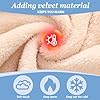3 in 1 Beanie Hat with Scarf and Mask,Womens Knit Beanie Hat Fleece Lined Winter Scarf Mask Set Snow Caps
$18.99 (as of December 16, 2025 07:58 GMT +00:00 - More infoProduct prices and availability are accurate as of the date/time indicated and are subject to change. Any price and availability information displayed on [relevant Amazon Site(s), as applicable] at the time of purchase will apply to the purchase of this product.)CQR Men's Polo Shirts, Tactical Short Sleeve Golf Performance Shirts, Lightweight Dry Fit UPF 50+ Pique
$24.98 (as of December 16, 2025 02:36 GMT +00:00 - More infoProduct prices and availability are accurate as of the date/time indicated and are subject to change. Any price and availability information displayed on [relevant Amazon Site(s), as applicable] at the time of purchase will apply to the purchase of this product.)Bringing your little one along on winter hikes opens up special seasonal memories together in nature. But it also requires some extra preparation and precautions to keep your baby comfortable, safe and happy when braving the cold.
This comprehensive guide covers everything new parents need to know when packing up babies under 1 year old to hit scenic winter trails. We’ll overview choosing child-friendly destinations, gear necessities like insulation and wind protection, plus tips for feeding, naps and temperature regulation out on the frosty paths less traveled.
After detailing key considerations across planning, packing and practice, you’ll feel fully equipped embarking on magical wintry hikes with your bundled up baby this year!
Finding Baby-Friendly Winter Hikes
Selecting the right winter trail for a rejuvenating trek with your tiny hiking buddy involves balancing amenities, difficulty and seasonal appeal.
Keep these aspects in mind when searching kid-tailored routes:
Terrain
- Groomed paths with limited ice patches
- Minor elevation changes without steep inclines
- No dangerous dropoffs or fast moving waterways
Duration
- Short 1-2 mile out and backs ideal for infants
- Avoid longer all day endurance testing routes
Facilities
- Restrooms and shelter structures along the route
- Nearby towns for supply replenishment
Scenery
- Snow coated evergreens and ridges that delight senses
- Open vistas revealing wintry magic across peaks
Kid centric excursions like the Mirror Lake Loop Trail in Lake Placid offer quintessential winter views without brutalizing tiny legs. Scope routes matching ability levels as your baby grows for years of memorable snow hikes!
Insulating Infants for Warmth & Wind Resistance
Baby bodies lose heat rapidly on cold hikes requiring much heartier insulation measures than parents:
Inner moisture-wicking layer – Form hugging sleeve shirt and pants
Middle insulating layer – Fleece jumpsuit, bunting suit or snowsuit
Outer wind proof layer – Water resistant jacket with hood and pants
Hands – Mittens with fold-over cuffs covering wrist gaps
Feet – Soft soled shoes allowing ankle flexing
Head – Fleece neck gaiter, beanie and hood cinched over helmet
Go with wool, fleece and breathable fabrics allowing ventilation. Dress baby similarly as if napping outside in a stroller to stay nice and toasty hitting the wintry trails!
Transporting Infants on Winter Hikes
Toting babies along frigid hikes requires choosing a safe, insulated carrying method allowing parent mobility:
Front Baby Carriers
- Allows child close monitoring
- Even weight distribution
- Natural body warming
Backpack Carriers
- Leaves hands free handling gear
- Protects children from wind exposure
- Internal cockpits harbor body heat
Pulled Sleds
- Lets child ride bundled when tired
- Storage for hiking gear bags
- Smooth terrain only
Test gear fully loaded on driveway walks checking comfort. Sturdy trailhead terrain strollers also work for older 1 year olds able to sit independently.
Additional Gear & Safety Essentials
Besides bundling up baby, be sure to pack these additional winter hiking child essentials:
Emergency Supplies
- Extra blankets, socks, hat and gloves
- Hand/feet warmers
- Thermal sleeping bag wrap
Food & Water
- Insulated bottles with hot liquids
- Easy to grasp finger snacks
- Reusable food hand warmers
Baby Care & Comfort
- Portable wipes and changing pad
- Favorite toys
- Pacifiers
Navigation & Contingencies
- Offline downloaded trail map
- Battery backup charger
- Waterproof matches/fire starters
Prep for wildlife encounters, bathroom needs and gear failures challenging tiny hikers. Stay vigilant keeping babies smiling ear to ear!
Feeding Time Adaptations
Schedule your wintry trek when baby is not likely to get hungry. But if mealtime hits, find a draft shielded spot to breastfeed or bottle feed.
- Seek sunny sheltered nooks out of the wind
- Use blanket layers and parent body as shields
- Give nutrients time cooling to avoid mouth burns
- Keep infants positioned upright avoiding ear fluid buildup
Quickly recenter clothing and carriers after feedings before exposing babies to chill. Refuel yourself with insulated liquids and high energy trail snacks to maintain energy warming your child.
Napping On The Go
Carrying well fed, snug babies generally lulls them into snoozing while you trek. But if mobile toddlers need an on-trail nap, insulate them fully inside clothing and carriers before they doze off. The key is preventing heat loss from wind the instant they fall asleep.
Rest stops also allow warming any chilled extremities like hands and feet inside parent jackets transferred skin to skin. Just beware of extending breaks too long letting gear get damp.
Getting babies comfortable for hiking naps keeps their energy levels charged all day!
Regulating Baby Temperature
While winter hiking offers magic views, babies lose body warmth much quicker than parents requiring closer monitoring for any shivering or redness signaling underheating:
Watch for these cooling indicators:
- Excessive shivering
- Lips or fingers losing color
- Cheeks turning flush red
- Skin feeling cold to touch
- Cranky, lethargic mood
Warm babies back up by:
- Adding dry insulation layers
- Placing heating packs near skin
- Entering vehicle/building to increase ambient warmth
Prevent heat loss by:
- Keeping skin covered in wind blocking fabrics
- Tightening arm/leg cuffs sealing out drafts
- Readjusting hoods and booties keeping heads/feet covered
- Strapping child into carriers pressing them against your warmer body
Stay keenly aware of baby thermometer cues so you can immediately respond and restore cozy comfort if their tiny bodies start cooling. Getting a feel for your child’s individual limits comes with practice through many seasons trekking your friendly neighborhood trails as their fortitude builds over time.
Returning Home After Chilly Adventures
Finish strong guiding tiny trekkers home by:
- Changing any wet clothes ASAP next to vehicle/building heat vents
- Wrapping babies in fresh warm blankets
- Replenishing calories with breastmilk/formula and finger foods
- Spot checking hands/feet/ears for any frostnip irritation
Post hike, continue monitoring baby energy and body temperature closely the rest of day in case any issues arise.
As babies grow walking and communicating, they better assist regulating their own warmth and conveying discomforts. But for wee young infants under a year, assume full responsibility keeping them healthy and at ideal cozy temperature whenever braving icy outdoor environments together.
Building wonderful memories tromping through magical snowy settings as new families motivates kids growing up valuing nature and outdoor traditions. Just take things slowly at first while discovering ideal winter gear combinations suiting your child’s maturity and tolerances in the beauty that abounds over each new hill!
Winter Hiking with Baby – Key Takeaways
- Find short, easy scenic trails perfect for infants
- Dress babies in moisture wicking base layers
- Choose child carriers insulating from wind/cold
- Pack extra food, gear and emergency items
- Monitor temperature, watch for shivering
- Manage naps and feedings to maintain energy
What favorite memories emerge exploring winter wonderlands with your tiny bundled adventure buddy? Identify ideal starter trails in your region perfect for little ones to discover a lifelong affinity for the outdoors!





















